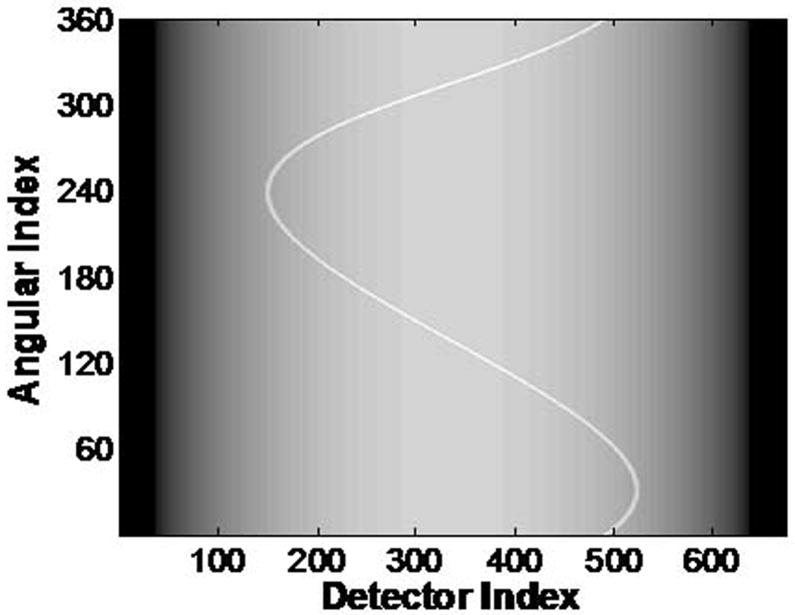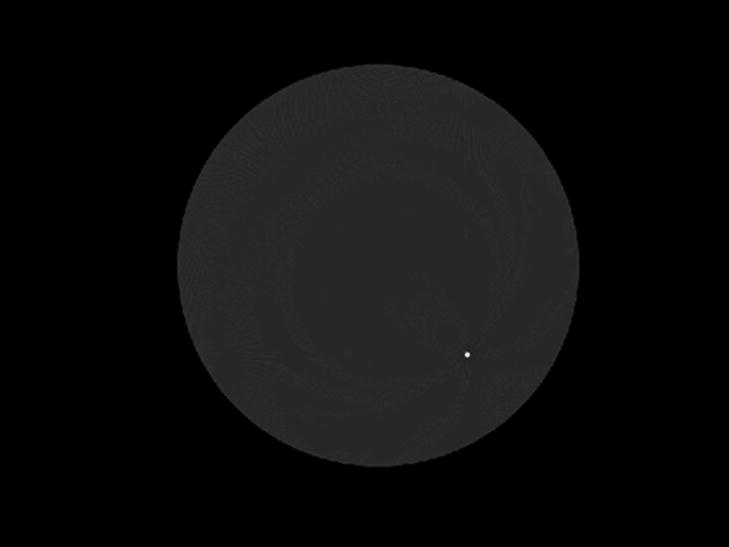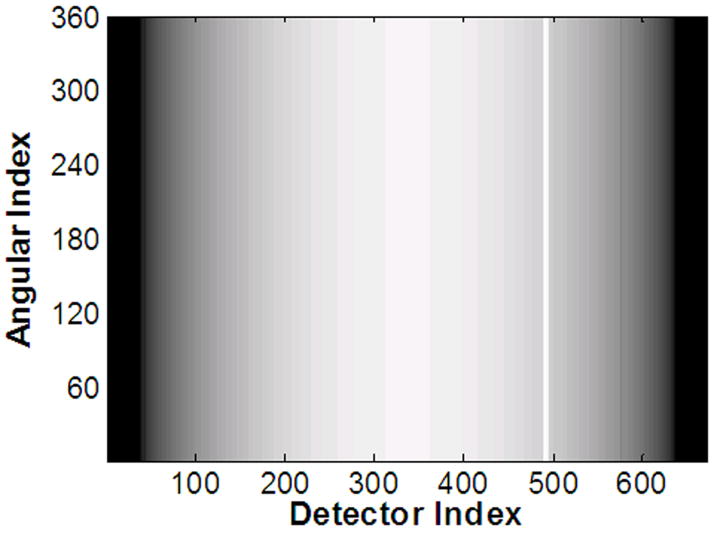Figure 1.
Simulation of sinograms (a, c) and corresponding reconstructed images (b,d) of a highly-attenuating “delta function” object in a uniformly dark cylindrical background for a stationary phantom and full-scan (360°) reconstruction (a, b) and the same phantom rotated at the same speed and direction as the gantry (c, d), also with a full-scan reconstruction. A ring artifact is created in 3rd generation CT when a ray sum is corrupted, typically due to a bad detector or problem with the x-ray source. The same effect occurs if a ray sum is blocked for every projection angle, in this case due to synchronous rotation of the gantry and phantom. If less than 360° are used in the scan reconstruction, the ring will be incomplete, covering only the angular range included in the image reconstruction. The radius of the ring in the reconstructed image depends on the position of the wire in the field of view at the beginning of the scan, which determines the location of the wire’s signal at a specific detector in the sinogram.




